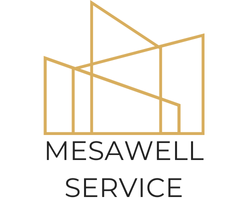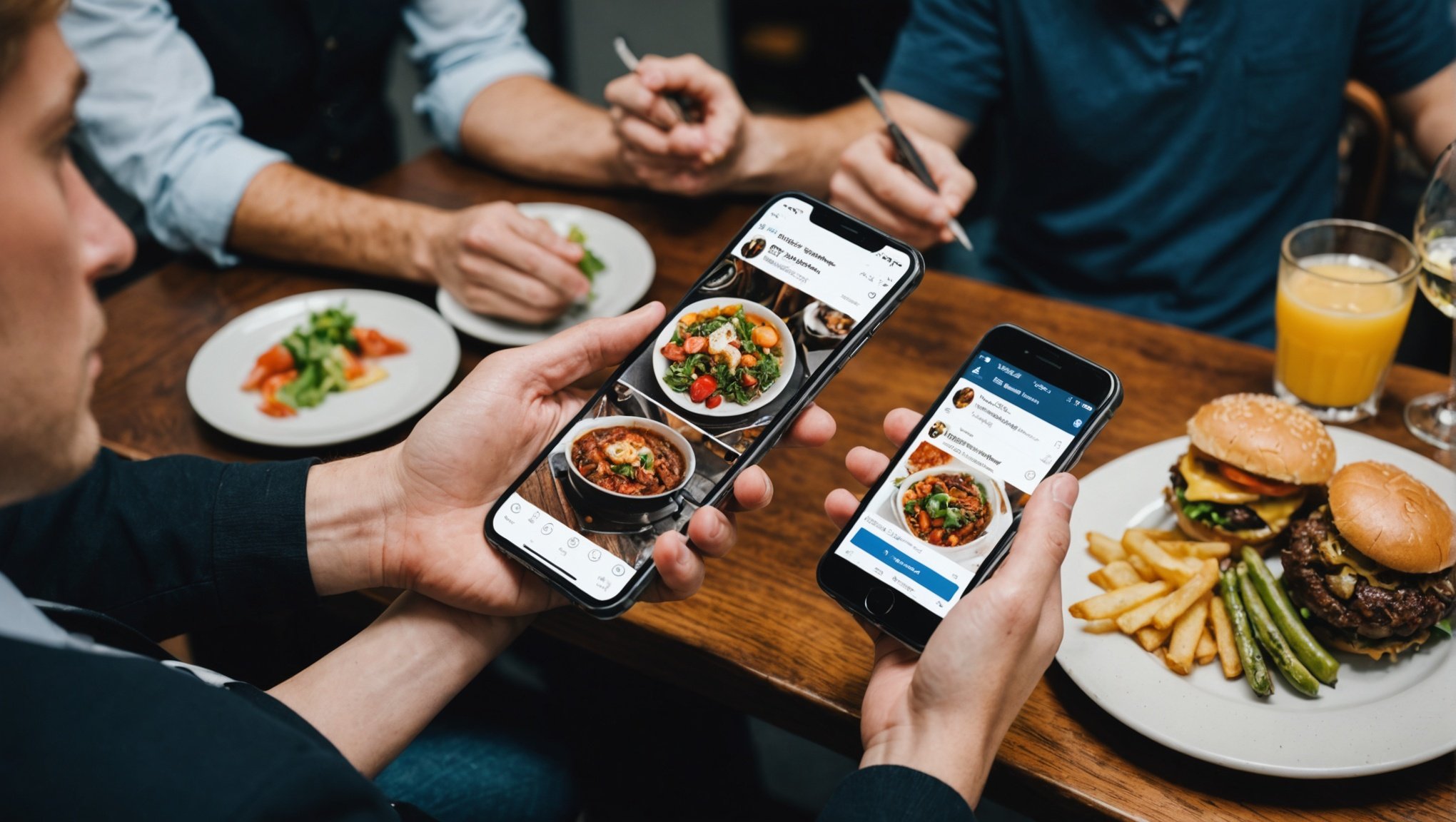Understanding the Importance of Social Media for Restaurants
In the bustling world of restaurants, the importance of social media cannot be overstated. At its core, social media platforms serve as a crucial tool for enhancing customer interaction, allowing eateries to engage with patrons beyond the dining experience. This online engagement fosters a sense of community and loyalty that can translate into filled tables and repeat visits.
According to recent statistics, a significant majority of restaurant-goers turn to social media when choosing where to eat. This highlights the need for robust restaurant marketing strategies that leverage these digital spaces effectively. Patrons often explore Instagram for appetizing food photos or browse Facebook for restaurant reviews before making dining decisions.
Also to discover : Crafting a Winning Employee Training Strategy for UK Small and Medium Enterprises
Establishing a strong online presence offers numerous benefits. Not only does it increase brand visibility, but it also allows restaurants to showcase their unique ambiance, menu offerings, and promotions in real time. Engaging posts can spark conversations, encouraging users to share their experiences or plans to visit, thus amplifying the restaurant’s reach through organic growth.
Authored with the aim of building meaningful online engagement, these strategies empower restaurants to remain competitive and relevant in an ever-evolving digital landscape. By mastering the integration of social media into their marketing initiatives, restaurants can ensure they remain on the radar of potential diners.
Topic to read : Crafting a Winning Brand Strategy: A Comprehensive Guide for Fashion Labels in the UK
Identifying Target Audience for Your Restaurant
Understanding your restaurant’s target audience is crucial for success. Begin by conducting a thorough target audience analysis. This involves identifying customer demographics like age, income, lifestyle, and preferences. It’s also important to perform local market research to comprehend specific community traits, such as cultural influences and prevailing cuisines.
Use various methods to define your restaurant’s target demographic. Surveys and interviews are direct ways to gather valuable insights from potential customers. This can help refine your menu offerings and marketing strategies.
Understanding local consumer behavior is paramount. This includes analysing competitors’ customers, observing peak visiting times, and noting popular dishes within the region. Such insights enable you to tailor your service to meet local expectations, thereby enhancing customer satisfaction and loyalty.
There are numerous tools available to conduct audience research in the restaurant industry. Digital analytics platforms, like Google Analytics, help track online customer interactions. In addition, social media insights provide data on what customers enjoy and share about restaurants similar to yours. Employing these methods allows for a more comprehensive understanding of your target market, ensuring that your restaurant aligns with consumer preferences and demands.
Setting Clear Objectives for Your Social Media Strategy
Setting clear objectives is vital for effective social media management, especially in the fast-paced world of restaurant marketing. One widely accepted method to create actionable goals is the SMART criteria—Specific, Measurable, Achievable, Relevant, and Time-bound. Implementing SMART goals can ensure that your social media efforts not only engage your audience but also contribute to the overall success of your restaurant.
When setting social media goals, consider objectives that align with your restaurant’s marketing objectives. Common objectives might include increasing brand awareness, driving traffic to your website, or engaging with customers through timely responses. These goals can help establish a more robust online presence.
Aligning your social media plan with the broader business strategy is crucial. If the ultimate aim is to increase customer footfall, your social media goals should focus on highlighting promotions or special events. Similarly, if enhancing customer loyalty is the goal, robust engagement and consistent communication via social media channels should be prioritised.
In summary, well-defined social media objectives rooted in the SMART framework not only support but enhance your restaurant’s overarching marketing objectives, creating a seamless alignment between goals and actions.
Choosing the Right Platforms for Your Restaurant
Selecting the best social media platforms for your restaurant requires careful evaluation. It involves understanding where your target audience is most active and which platforms can best highlight your offerings.
Popular Social Media Platforms for Restaurants
Restaurants typically thrive on Instagram and Facebook. These platforms offer visual content formats, crucial for showcasing mouth-watering dishes, inviting ambience, and customer reviews. Instagram’s hashtags and tagging features increase visibility among food enthusiasts. Meanwhile, Facebook supports engaging interactions through its events and community pages.
Niche Platforms and Their Benefits
Exploring niche platforms like Yelp and OpenTable can be beneficial. These platforms serve specific functionalities, acting as directories where users actively search for dining options. Yelp’s review system builds trust, while OpenTable facilitates reservations, enhancing customer convenience.
Factors to Consider When Choosing a Platform
Several key considerations play a pivotal role:
- User Demographics and Engagement Levels: Identify platforms where your target demographic spends most of their time and their level of interaction.
- Content Format Suitability: Analyse whether photos, videos, or text posts best serve your content goals.
- Brand Alignment with Platform Culture: Ensure your restaurant’s image aligns with the platform’s vibe for seamless integration and authenticity.
Carefully weighing these factors ensures an effective platform comparison, guiding you towards channels that maximise reach and engagement.
Content Creation Strategies for Engaging Your Audience
Navigating the world of social media is essential to keep your restaurant’s patrons engaged. Crafting engaging social media content ideas begins with understanding what resonates well with your audience.
Types of Content That Resonate with Restaurant Patrons
Restaurant patrons love content that offers an insider view. Behind-the-scenes videos or “day in the life” posts can foster a sense of exclusivity. Additionally, featuring customer testimonials can enhance trust and connection. Such engagement strategies transform casual viewers into loyal customers.
The Importance of Visual Content
Visual storytelling is particularly impactful in the restaurant industry. An inviting photograph can showcase your dishes in a way that words cannot. By focusing on the warmth of colours and intricate food details, you can stimulate a viewer’s senses. Aesthetic, clear visuals are vital for capturing attention in the first few seconds, ensuring the viewer remains engaged.
Best Practices for Storytelling Through Posts and Campaigns
Storytelling isn’t just about words; it’s about creating emotions. Campaigns should combine text and imagery to form a cohesive story, emphasizing themes of community and quality. Consistently incorporating these visual storytelling principles into your marketing efforts ensures that your content remains fresh and engaging.
Implementing a Social Media Management Tool
Social media’s dynamic nature demands effective content management solutions, especially for restaurants seeking to enhance their online engagement. By leveraging social media tools, businesses can streamline their activities and maintain a consistent online presence, thereby increasing customer interaction and brand loyalty.
Benefits of Using Social Media Management Tools:
- Efficiency: These tools simplify scheduling, enabling restaurant owners to focus more on their core business operations.
- Consistency: Regular updates can be automated, ensuring the brand remains active and relevant.
- Analytics: Advanced scheduling software provides insights into engagement metrics, helping adjust strategies to better meet audience demands.
Popular Tools and Their Features:
- Hootsuite: Known for its robust scheduling features, Hootsuite allows the integration of multiple accounts and offers powerful analytics.
- Buffer: Offers a user-friendly interface with scheduling and collaboration options, ideal for team environments.
- Sprout Social: Provides sophisticated tools for content strategy, featuring detailed reporting and trend analysis.
Tips for Scheduling and Automating Posts:
- Plan a content calendar to maintain consistent messaging across platforms.
- Use data-driven insights from analytics to optimize post timing.
- Schedule posts during peak engagement times to maximize visibility and interaction.
Engaging with Your Audience and Building Community
To thrive in today’s digital age, effective customer engagement and community building are paramount for any brand. Successfully responding to customer inquiries and feedback is one way to enhance these interactions. Consistency and timeliness are essential. Answer questions promptly and provide clear, concise responses. This approach not only addresses consumer concerns but also fosters trust and loyalty.
Another robust method is hosting online events and promotions. These activities spark interest and boost engagement. Consider organising webinars, Q&A sessions, or exclusive product launches. They bring people together and offer valuable opportunities for interaction, allowing customers to connect with the brand on a more personal level.
Fostering a sense of community around your brand also requires strategic effort. Developing a space where customers feel valued and part of a larger conversation is crucial. Encourage discussions between customers by creating forums or social media groups dedicated to your brand. Facilitate interactions where customers can share experiences and ideas, strengthening communal ties.
In summary, enhancing online interactions through thoughtful techniques in responding to queries, hosting engaging events, and developing a community-focused environment greatly boosts brand affinity. Being proactive and attentive in these areas pays dividends in loyalty and long-term success.
Measuring and Analyzing Social Media Success
Understanding the success of social media strategies relies heavily on social media analytics. For restaurants, identifying key performance indicators (KPIs) is crucial. These KPIs include factors such as engagement rates, follower growth, and customer interactions. Keeping track of these metrics allows you to gauge the effectiveness of your efforts.
There are various tools for tracking and analyzing social media metrics. Tools such as Google Analytics, Hootsuite, and Sprout Social provide valuable insights, giving you the ability to see which posts resonate with your audience. They enable you to dissect your performance metrics, revealing patterns and trends that inform decision-making.
Once you’ve gathered data, it’s important to adjust your strategies based on these data-driven insights. For instance, if you notice that posts featuring behind-the-scenes content receive higher engagement, you might decide to incorporate more of this in the future. The beauty of social media is the ability to pivot strategies quickly in response to the metrics.
ROI (Return on Investment) is another critical component of social media analytics. Assess whether the resources dedicated to social media are yielding adequate returns. By monitoring the right performance metrics, you can ensure that your social media strategies align with your overall business goals, driving success and growth.
Case Studies and Practical Examples
In the ever-evolving world of social media, understanding social media success stories in the restaurant industry can provide invaluable insights. In the UK, restaurants that have embraced innovative campaigns have often found tremendous growth and engagement online. For example, a small bistro in London tripled its customer base by hosting virtual cooking classes on Instagram, proving that creativity can win over followers in droves.
Exploring such restaurant marketing examples highlights not only triumphs but also the challenges and downfalls some face. A renowned eatery failed to leverage its social presence due to inconsistent posting and lack of customer interaction, underscoring the importance of continuous engagement and strategic planning.
Best practices are drawn from these narratives of success and failures. Firstly, integrating interactive content like polls or live streams can catalyse audience interaction. Secondly, maintaining a consistent posting schedule keeps a brand top-of-mind for potential customers. Lastly, addressing customer feedback promptly nurtures trust and loyalty.
Key takeaways from these case studies offer a blueprint. Trust the power of creativity, leverage interactive platforms, and always stay proactive in engaging with your audience to ensure your social media marketing plan stands the test of time.











